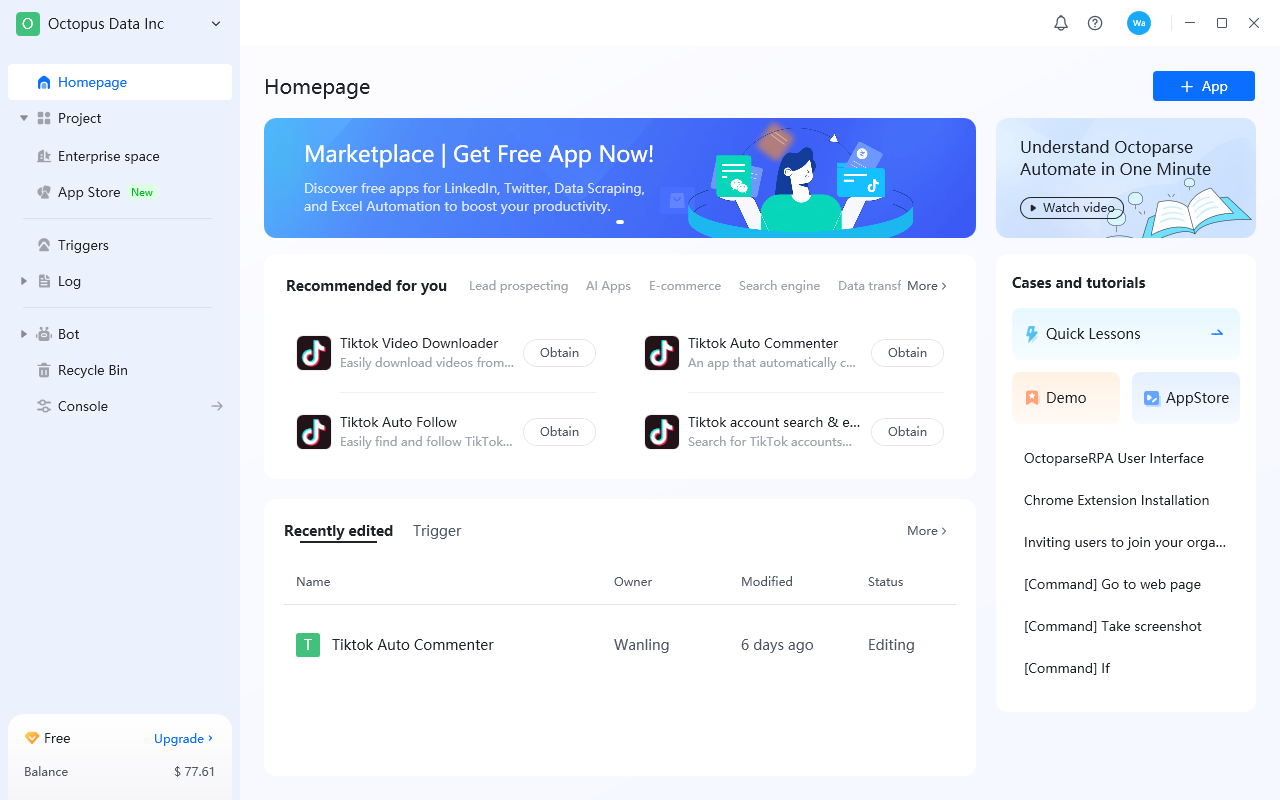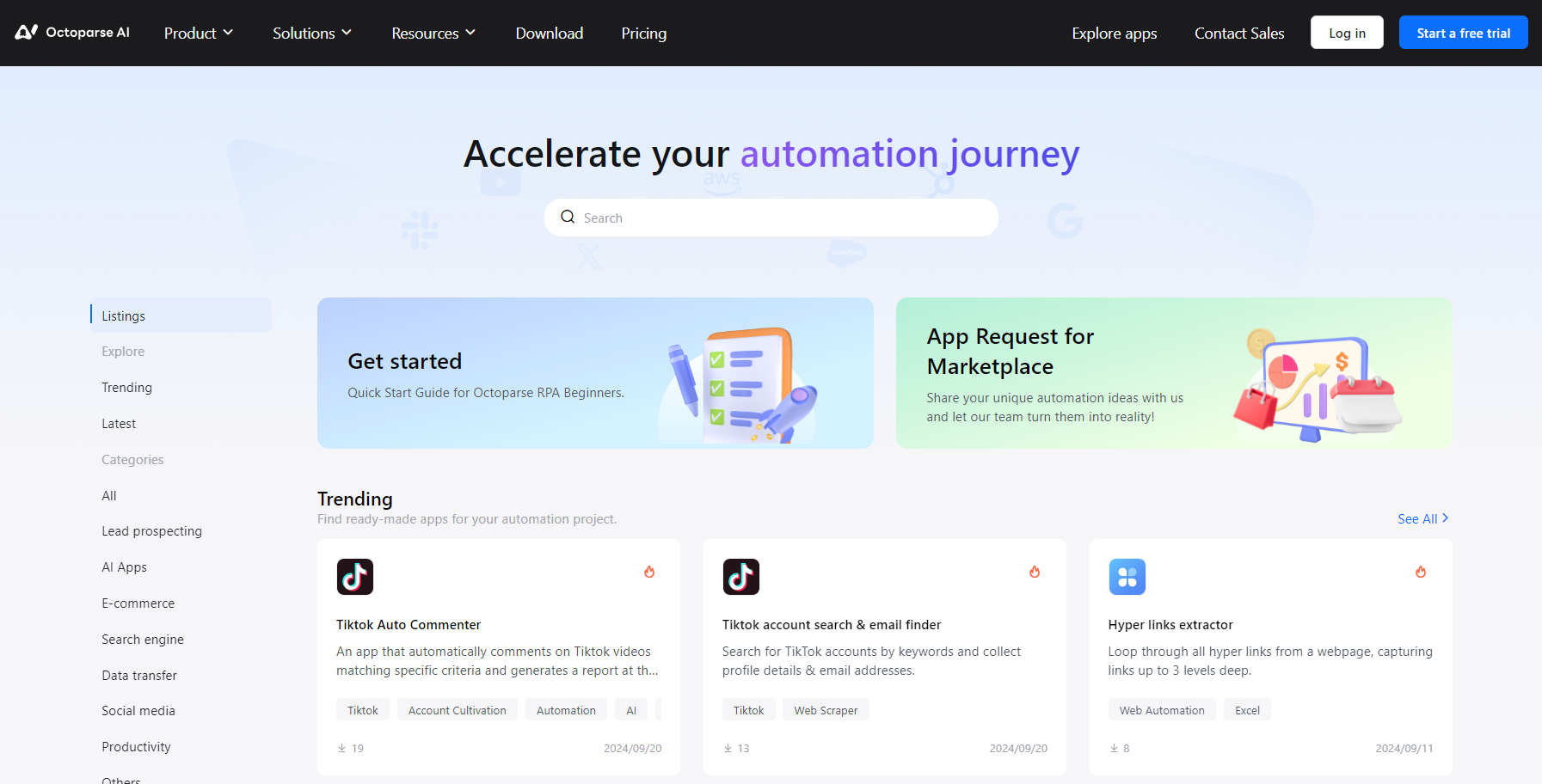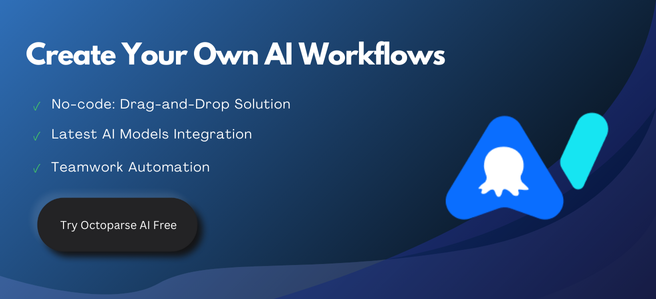Workflow automation has moved from luxury to need in the digital-first corporate environment of today. From mistakes to increased efficiency, companies in all sectors are using automation to release human capital for strategic projects. On the other hand, putting good automation solutions into practice offers many technical and operational issues that could compromise success.
Combining no-code simplicity with enterprise-grade capabilities, Octoparse AI is a paradigm change in workflow automation. This book investigates the most urgent automation issues and how Octoparse AI’s creative solution provides consistent, scalable answers.
1. Eliminating Technical Barriers with No-Code Automation
The complexity of conventional automation tools presents major adoption challenges. Usually, conventional RPA solutions call for: Non-technical users trying to implement workflow automation solutions face notable entry barriers due to the need of specialized programming knowledge in languages like Python or Java, as well as the need to understand complicated HTML/CSS structures and have advanced technical knowledge for continuous maintenance and troubleshooting.
🌟 Octoparse AI revolutionizes this paradigm through:
- Intuitive drag-and-drop interface requiring zero coding
- Visual workflow builder with pre-configured templates
- AI-powered element recognition that automatically identifies fields, buttons, and data points
- Contextual guidance and tooltips throughout the platform
This approach democratizes automation, enabling business users across departments to create and manage workflows without IT dependency. Marketing teams can automate lead collection, finance departments can streamline report generation, and operations can optimize data processing – all through the same accessible interface.
2. Maintaining Stability in Dynamic Digital Environments
Website volatility remains one of automation’s most persistent challenges. Common issues include:
Modern websites undergo constant evolution, with industry data showing 30-40% of e-commerce platforms implementing monthly layout and design refreshes, while simultaneously running A/B testing variations to optimize user experience, introducing seasonal interface modifications to align with marketing campaigns, and implementing critical security updates that frequently alter underlying page structures – all of which combine to create a dynamic digital environment where static automation solutions quickly become obsolete.
🌟Octoparse AI’s adaptive technology addresses these challenges through:
- Multi-layered element identification (visual, structural, and contextual)
- Automatic adjustment to minor layout changes
- Version comparison tools for troubleshooting major updates
- Change detection alerts with recommended adjustments
The platform’s self-healing capabilities maintain up to 90% workflow continuity through typical website changes, compared to 20-30% with conventional tools. This dramatically reduces maintenance overhead and ensures reliable operation.
3. Ensuring Data Quality at Scale
A workflow automation solution is only as valuable as the quality of data it produces. Common pain points like inconsistent formatting, missing records, duplicate entries, and structural variations can quickly negate automation’s efficiency gains.
🌟Octoparse AI tackles these challenges through built-in quality controls:
Processing Layer:
- Real-time validation catches errors during extraction
- Automatic normalization of dates, currencies and units
- Smart deduplication that handles near-identical records
- AI-powered pattern recognition for unstructured data
Output Flexibility:
- Direct database transfers for enterprise systems
- Business-friendly CSV/Excel exports
- Developer-ready JSON formats
- Seamless API connections
This integrated approach delivers clean, analysis-ready data while maintaining automation’s efficiency benefits – eliminating the manual cleanup that often undermines ROI.
4. Scaling Automation with Business Growth
As businesses grow, many automation solutions struggle to maintain performance. Common scaling limitations emerge:
- Performance bottlenecks with expanding datasets
- Mounting maintenance overhead
- Resource conflicts in shared infrastructure
- Unpredictable processing delays
🌟Octoparse AI’s cloud-native design overcomes these constraints through:
Intelligent Scaling Features:
- Automatic resource allocation matching workload demands
- Parallel processing architecture for large-scale operations
- Configurable task prioritization
- Enterprise-grade dedicated nodes
- Live performance analytics
The platform maintains consistent speed and reliability even when processing millions of records, proving true linear scalability that grows with your business needs. This enterprise-ready architecture eliminates the performance trade-offs that plague conventional automation tools during expansion periods.
5. Creating Connected Automation Ecosystems
Isolated automation creates data silos and process fragmentation. Integration challenges include:
- Authentication and protocol differences
- Data mapping complexities
- Event-driven workflow requirements
- Legacy system compatibility
🌟Octoparse AI offers comprehensive integration capabilities:
- Native connectors for popular business apps (Salesforce, HubSpot, etc.)
- REST API for custom integrations
- Webhook support for event triggering
- Bidirectional data sync capabilities
- Flexible authentication methods (OAuth, API keys, etc.)
These features enable true end-to-end automation across the digital workplace.
Best Practices for Automations
Successful automation initiatives follow key principles:
Strategic Process Selection for Maximum Impact
Organizations should carefully choose processes that provide the greatest return on investment by focusing on high-volume, repetitive tasks with clearly defined rules and few exceptions as they implement automation. They should also purposefully pursue quick-win possibilities that show real value and strengthen organizational confidence in automation capacity.
Creating a Strong Governance System
Companies have to adopt thorough governance policies including role-based access controls to limit system permissions, version control processes to monitor changes, multi-tier approval processes for production deployments, and thorough audit logs preserving total operational transparency if they are to guarantee safe and compliant automated operations.
Data-driven refinement provides continuous optimization
Sustaining maximum automation performance calls for continuous tracking of important indicators to find areas for improvement, consistent iteration depending on actual usage patterns, and smart use of built-in platform analytics to direct optimization choices and resource distribution.
Driving Enterprise-Wide Automation Adoption
Successful organizational adoption depends on creating role-specific training programs customized to various user groups, building centralized knowledge bases for self-service learning, encouraging cooperative communities for sharing best practices, and officially honoring automation champions showing outstanding creativity in using the technology.
Octoparse AI – Best Workflow Automation Tool
By skillfully fusing enterprise-grade capabilities with user-friendly no-code functionality, Octoparse AI offers a revolutionary approach to workflow automation. This allows enterprises to quickly implement intelligent automation solutions that maintain strong integration with current technology ecosystems while continuously adapting to changing business environments.

Octoparse AI gives businesses the means to fully utilize automation as digital transformation picks up speed. The platform converts automation from a tactical tool to a strategic advantage by tackling both technical and operational issues.

Conclusion
The scalability and dependability needed for mission-critical processes are provided by this potent combination, which also yields measurable efficiency gains, accelerated implementation timelines, and drastically lower maintenance overhead.
The platform enables companies to turn automation from a technical specialty into a strategic advantage that creates a sustainable competitive edge and sets up businesses for long-term success in an increasingly digital marketplace by removing conventional adoption barriers with its self-learning architecture and user-friendly visual interface.
